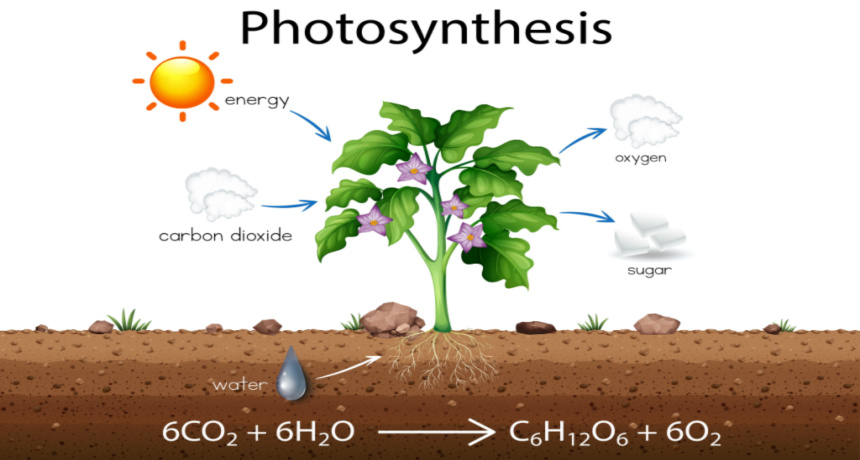Uses of Air - Role of Air in Human life, FAQs
Have you ever wondered how essential air is to every living being on Earth? What makes oxygen in the air so vital for respiration, and how does it help in burning fuels to produce energy? Why do plants depend on carbon dioxide from the air for photosynthesis? On Earth, air is a natural property that sustains life. It exists in the atmosphere and consists of a combination of many gases in higher proportions, such as oxygen, nitrogen, and carbon dioxide, as well as much lower quantities of argon, water vapour, and other gases. Bacteria, suspended particles, and spores can all be found in the air.
This Story also Contains
- Air
- Components Of Air
- Role of Air in Human Life
- Uses of Air
- Some Solved Examples
The Chemistry of air, on the other hand, is very intriguing. The gaseous state of air is a non-visible form of substance that is free-flowing. We can't see it, taste it, or smell it, although we can sometimes smell it. Air, on the other hand, is a recognised substance that, like all air matter, has weight, is compressible, and occupies space. Meanwhile, chemistry and physics are primarily concerned with the components of air and their properties.
Air
The atmosphere of Earth, often known as air, is the layer of gases that surrounds the planet and forms its planetary atmosphere and is held in place by gravity. The Earth's atmosphere supports life on the planet by providing pressure that allows liquid water to exist on the surface, absorbing ultraviolet solar radiation, and warming the surface via heat retention (greenhouse effect), as well as lowering temperature differences between day and night (the diurnal temperature variation).

Also read -
- NCERT Solutions for Class 11 Chemistry
- NCERT Solutions for Class 12 Chemistry
- NCERT Solutions for All Subjects
Components Of Air
Nitrogen, oxygen, and argon are the three main components of the Earth's atmosphere. Water vapour makes up around 0.25 per cent of the mass of the atmosphere. Water vapour (a greenhouse gas) concentrations range from roughly 10 parts per million by volume in the coldest parts of the atmosphere to as much as 5% by volume in hot, humid air masses, and concentrations of other atmospheric gases are similarly variable. The remaining gases, which include greenhouse gases such as carbon dioxide, methane, nitrous oxide, and ozone, are referred to as trace gases.
Other noble gases, such as neon, helium, krypton, and xenon, are present in addition to argon. Many other chemical components are present in trace levels in filtered air. In an unfiltered air sample, several chemicals of natural origin, such as mineral and organic dust, pollen and spores, sea spray, and volcanic ash, may be present in small amounts in regionally and seasonally varying proportions as aerosols.
Role of Air in Human Life
Air is made up of a mixture of gases with higher concentrations of oxygen, nitrogen, and carbon dioxide, and considerably lower amounts of argon, water vapour, and other contaminants. People are alive, and pure gas is breathing. The size, form, and composition are all up to you. It is colourless and odourless. Because air is a substance, it has mass and weight. The weight of air creates atmospheric pressure. 78 per cent nitrogen, 21% oxygen, 0.9 percent argon, 0.04 per cent carbon dioxide, and extremely minute amounts of other gases and water vapour make up the air. Animals require aerobic respiration to breathe the dissolved oxygen.
Do you know what are the uses of air? We inhale oxygen that reaches the lungs, and capillaries in the lungs' blood absorb oxygen and exhale carbon dioxide into the air when we breathe. The act of breathing is a byproduct of the respiration process. Through respiration, a living creature takes in oxygen from the air and exhales carbon dioxide. This process provides the energy that plants and animals require to eat, grow, and live. Carbon dioxide, or CO2, is an odourless gas that is emitted when humans and animals breathe. Plants employ this gas to generate food, as well as oxygen, in comparison to sunlight. This is referred to as photosynthesis. Nonetheless, large volumes of CO2 are created as cars and power plants burn coal, oil, and gasoline. This is bad news, because CO2 is a key contributor to human-caused global warming.
Our environment's air acts as a buffer, keeping the planet from getting too cold or too hot. Another type of airborne gas, ozone, typically protects humans from too much sunlight. The presence of air in the environment will also protect us against meteoroids. When meteoroids collide with our atmosphere, they brush up against the air and are frequently burnt into minute fragments before reaching Earth.
|
Related Topics Link, |
Uses of Air
-
About Air is a Significant Energy Source:
Both live plants and animals rely on oxygen to generate uses of air useful energy. After eating food, body cells acquire oxygen from the blood and generate electricity in the form of ATP. If life on Earth is to exist, this metabolic production of ATP is critical. That's one of the air applications, then.
-
It is a Sound Conducting Medium
We can only hear the sound of a voice, vibrations, and other sounds when there is air around us. Because the wind is a good conductor of air, it does happen. Without a gadget, we won't be able to hear anything, and we won't be able to create the effects.
Also read :
- NCERT Notes Class 12 Chemistry Chapter 16 Chemistry in Everyday Life
- NCERT Solutions for Class 12 Chemistry Chapter 16 Chemistry in Everyday Life
- NCERT Exemplar Class 12 Chemistry Solutions Chapter 16 Chemistry in Everyday Life
-
It is Crucial in the Water Cycle:
The water cycle is the process of sun-heated soil water, oceans, and seas evaporating and clouds forming. Such clouds migrate toward the land's surface, where they are cooled by the wind and rain. This rainwater returns to the sea and the ocean.
-
It is in Charge of the Pollination of Crops:
Plants create male gametes in pollen grains. Pollination is the process of pollen grains moving from a male flower to a female flower and mixing with female gametes. This can happen in flowers on the same plant or in plants that are far apart, thanks to wind force. This maintains thermal homeostasis on the Earth's surface when it is hot.
-
It Aids in the Drying Process (Moisture Balance):
The soil becomes saturated from the rain as it dries due to air. On a wet floor, it's really sticky. As a result, the humid areas are obscured by less warm or cold air masses. The new dry surface layer absorbs moisture from the wet surface, and the process repeats until the surface is completely dry.
-
Combustion:
Aside from that, air promotes combustion or burning. The oxygen in the air aids in the combustion of fuels, which is necessary for activities such as cooking, running industries and automobiles, and creating heat and power.
-
Photosynthesis:
Plants use of air carbon dioxide, which is a component of air, in the photosynthesis process. Plants also emit oxygen in this area. And we all know how important oxygen is.

Also, check-
Some Solved Examples
Question 1: Which of the following gases is present in the highest proportion in air?
a) Oxygen
b) Carbon dioxide
c) Nitrogen
d) Argon
Solution: Dry air contains ≈ 78% nitrogen, 21% oxygen, ~1% argon, and ~0.03% carbon dioxide. Hence, nitrogen is the major component.
Hence, the correct answer is option (c)
Question 2: What is the approximate percentage of oxygen in the Earth’s atmosphere by volume?
a) 78%
b) 21%
c) 1%
d) 0.03%
Solution: Oxygen makes up about 20.9% by volume of dry air, close to 21%
Hence, the correct answer is option (b)
Question 3: Which gas in air is essential for the process of photosynthesis in plants?
a) Oxygen
b) Nitrogen
c) Carbon dioxide
d) Argon
Solution:
Photosynthesis equation:
$6 \mathrm{CO}_2+6 \mathrm{H}_2 \mathrm{O} \xrightarrow{\text { sunlight, chlorophyll }} \mathrm{C}_6 \mathrm{H}_{12} \mathrm{O}_6+6 \mathrm{O}_2$
Carbon dioxide is the key raw material.
Hence, the correct answer is option (c)
Question 4: Which noble gas is present in small amounts in air and is commonly used in electric bulbs?
a) Helium
b) Argon
c) Neon
d) Krypton
Solution: Argon ≈ 0.93% in air. It is inert and prevents the tungsten filament in bulbs from oxidising.
Hence, the correct answer is option (b)
Frequently Asked Questions (FAQs)
The atmosphere of Earth, often known as air, is the layer of gases that surrounds the planet and forms its planetary atmosphere and is held in place by gravity. The Earth's atmosphere supports life on the planet by providing pressure that allows liquid water to exist on the surface, absorbing ultraviolet solar radiation, and warming the surface via heat retention (greenhouse effect), as well as lowering temperature differences between day and night (the diurnal temperature variation
Nitrogen, oxygen, and argon are the three main components of the Earth's atmosphere. Water vapour makes up around 0.25 percent of the mass of the atmosphere. Water vapour (a greenhouse gas) concentrations range from roughly 10 parts per million by volume in the coldest parts of the atmosphere to as much as 5% by volume in hot, humid air masses, and concentrations of other atmospheric gases are similarly variable.
Plants uses of air carbon dioxide, which is a component of air, in the photosynthesis process. Plants also emit oxygen in this area. And we all know how important oxygen is.
Air is a natural resource that is abundantly available. Air is an extremely beneficial and has numerous applications including
Maintain life and growth
Combustion
Maintains temperature
Photosynthesis
source of energy.
We inhale oxygen that reaches the lungs, and capillaries in the lungs' blood absorb oxygen and exhale carbon dioxide into the air when we breathe. The act of breathing is a byproduct of the respiration process. Through respiration, a living creature takes in oxygen from the air and exhales carbon dioxide. This process provides the energy that plants and animals require to eat, grow, and live.
Carbon dioxide, or CO2, is an odorless gas that is emitted when humans and animals breathe. Plants employ this gas to generate food, as well as oxygen, in comparison to sunlight. This is referred to as photosynthesis. Nonetheless, large volumes of CO2 are created as cars and power .
Pure air is free from germs and harmful gases while polluted air contains harmful gases and unwanted substances.
Vehicles and industries let out some poisonous gases into the air which pollutes the air.
Air is a natural resource that is abundantly available. Air is an extremely beneficial and has numerous applications including
Maintain life and growth
Combustion
Maintains temperature
Photosynthesis
source of energy.